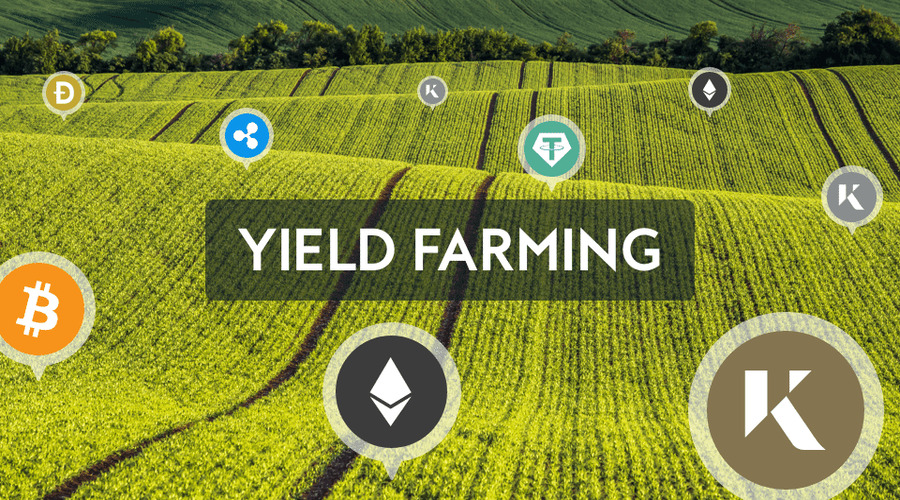
Yield farming is a popular term used in the world of decentralized finance (DeFi). It refers to the practice of generating returns by providing liquidity to DeFi protocols. In this article, we’ll take a closer look at yield farming in DeFi and how it works.
What is Yield Farming?
Yield farming involves lending or staking cryptocurrency assets to a DeFi protocol in exchange for rewards or fees. These rewards can come in the form of interest payments, trading fees, governance tokens, or other incentives.
In yield farming, users provide liquidity to a DeFi protocol by depositing cryptocurrencies into a smart contract, which is used to facilitate transactions on the platform. These smart contracts are programmed to distribute rewards to users based on the amount of liquidity they provide.
Yield farming has become popular in DeFi because it provides users with a way to earn passive income on their cryptocurrency assets. It also helps to bootstrap liquidity in new DeFi protocols by incentivizing users to provide capital.
How Yield Farming Works
Yield farming works by incentivizing users to provide liquidity to a DeFi protocol. To participate in yield farming, users first need to acquire the cryptocurrency assets that are accepted by the protocol. They can then deposit these assets into a smart contract on the protocol, which is used to facilitate transactions.
The smart contract is programmed to distribute rewards to users based on the amount of liquidity they provide. These rewards can come in the form of interest payments, trading fees, governance tokens, or other incentives.
The amount of rewards that users receive is determined by a number of factors, including the amount of liquidity they provide, the length of time they hold their assets in the protocol, and the current market conditions.
Yield Farming Strategies
There are a number of different strategies that users can employ when yield farming. Some of the most popular strategies include:
- Liquidity Mining
Liquidity mining involves providing liquidity to a DeFi protocol in exchange for governance tokens. These tokens can be used to vote on decisions related to the protocol, such as changes to the fee structure or new features.
- Flash Loans
Flash loans are a type of uncollateralized loan that can be used to generate profits through arbitrage opportunities. Users can borrow funds from a DeFi protocol and use them to buy and sell assets on other exchanges, earning a profit on the price difference.
- Automated Market Making (AMM)
AMM is a type of decentralized exchange that uses algorithms to determine the price of assets. Users can earn rewards by providing liquidity to an AMM pool, which is used to facilitate trades on the platform.
Risks and Challenges
While yield farming can be a lucrative way to earn passive income on cryptocurrency assets, it also comes with risks and challenges. Some of the key risks and challenges associated with yield farming include:
- Impermanent Loss
Impermanent loss occurs when the price of the assets being traded on a DeFi protocol changes, resulting in a loss for liquidity providers. This can occur when one asset in a trading pair experiences a large price increase or decrease, resulting in a loss for the liquidity provider.
- Smart Contract Risk
Smart contracts are subject to coding errors and vulnerabilities, which can result in the loss of funds for users. It is important for users to conduct due diligence on the protocols they participate in and to be aware of the potential risks.
- Market Volatility
The cryptocurrency market is known for its volatility, which can lead to fluctuations in the value of assets held in a DeFi protocol. Users need to be prepared for potential losses and to have a diversified portfolio of assets.
Another risk associated with yield farming is the potential for high gas fees on the Ethereum network. Gas fees are the transaction fees paid by users to miners to process transactions on the Ethereum network. These fees can fluctuate based on the demand for network resources and can sometimes become prohibitively expensive.
Yield farming typically involves a series of transactions, including depositing assets into a liquidity pool, swapping assets, and withdrawing assets. Each of these transactions requires the payment of gas fees, which can add up quickly and erode profits for yield farmers.
One way to mitigate gas fees is to choose protocols that operate on a different blockchain that has lower fees, such as Binance Smart Chain or Polygon. However, users should be aware that these blockchains may have their own unique risks and challenges.
Another way to reduce gas fees is to optimize transaction timing by monitoring the Ethereum network’s gas prices and choosing times when fees are lower. This requires a bit of research and monitoring, but it can help save users significant amounts in gas fees over time.
Finally, it’s important to note that yield farming is a constantly evolving field, and new protocols and strategies are being developed all the time. This means that yield farmers need to stay informed and adapt to changing market conditions to stay profitable.
Conclusion
Overall, yield farming can be a rewarding way to earn passive income on cryptocurrency assets in the decentralized finance ecosystem. However, users need to be aware of the risks and challenges associated with yield farming, including impermanent loss, smart contract risk, and high gas fees. By doing their due diligence, diversifying their portfolio, and staying informed about market conditions, yield farmers can successfully navigate the world of DeFi and earn profits on their investments.